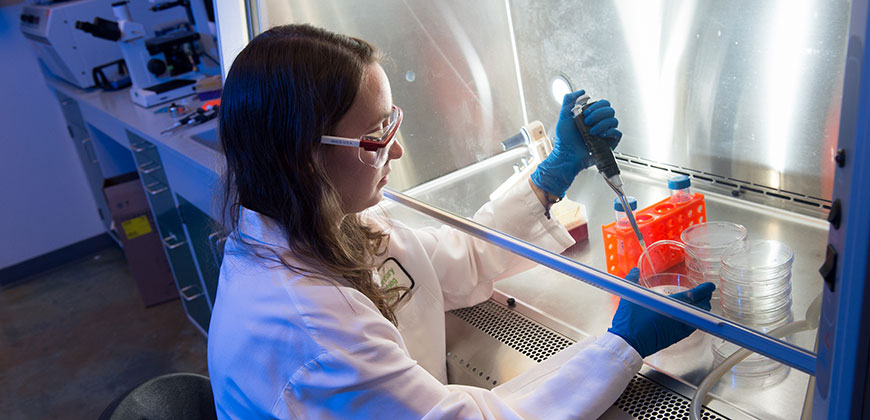
Biomedical engineering graduate student Kristin Jackson
Engineering hasn’t always been the most welcoming profession for women, but Colorado State University’s College of Engineering is working to change that. With the percentage of graduates who identify as female at 24.6 percent – higher than at CSU’s peer institutions – the college has gained significant ground in increasing recruitment and retention rates of female engineering students.
About five years ago, the college stepped up its efforts to enhance diversity, specifically pertaining to its number of women students. Dean David McLean believes achieving success in this area is in large part due to the college’s recruiting program.
“We have a college-level recruiting program with four permanent staff and 10-12 part-time student ambassadors that provides a very personalized recruiting experience,” McLean said.
Student-centered experiences
A gender-diverse group themselves, the college’s student ambassadors facilitate personal touch points with visiting high school students and serve as gatekeepers to the engineering experience. They lead tour groups, make phone calls to prospective students, and update social media. The college also sends targeted mailings to prospective students throughout the year, including letters and response cards from ambassadors.
The student ambassadors are housed within the Office of Academic and Student Affairs, which is also home to CSU’s chapter of the Society of Women Engineers (SWE). Led by Engineering Success Center Director Terry Comerford, SWE is a student organization aimed at helping women in the field of engineering network and gain real-world experience. An engineer herself, Comerford provides industry insight and guidance to students.
Biomedical engineering
Beyond the student ambassador program and SWE, another factor in increasing diversity is an interdisciplinary program in biomedical engineering, created in 2011. The program is set to enroll more than 400 students this fall, and women account for nearly half.
A National Science Foundation study suggests engineering is not often perceived to be associated with improving health, the quality of life, and the environment, which can preclude women from seeing themselves as engineers. Generally, women earn larger proportions of degrees in biomedical, chemical, materials, industrial, and civil engineering compared with other engineering disciplines, because these are most often associated with solving social problems.
24.6 percent: Good, but not good enough
Though targeted communications and a biomedical engineering program have increased numbers of women in CSU engineering, there is still plenty of room to grow.
Associate Professor of Civil and Environmental Engineering Rebecca Atadero is leading a National Science Foundation-funded study aimed at understanding whether curriculum changes can help expand students’ views of who can be an engineer.
“Our aim is to increase diversity awareness, inclusion, and ultimately retention of students, including women,” she said. Atadero wants to ensure students understand that diversity and inclusion are not only relevant in engineering, but are also fundamental to helping them become better engineers. She hopes that by teaching men and women these values now, they will bring those skills with them into industry after graduation
Graduate teaching fellowship program
The college is also launching a graduate teaching fellowship program this fall, which will leverage the expertise of 10 senior-level Ph.D. students to help improve retention at the freshman and sophomore levels.
Graduate teaching fellows will sit in chemistry, calculus and physics lectures, develop and deliver “learning labs,” provide mentoring, and offer office hours to help students apply these core courses to engineering. The program will provide additional active learning opportunities and more support for freshman classes, and hopefully, improve the freshman experience overall.
Following the success of the biomedical engineering program, the college is also building a School of Advanced Materials Discovery, which is also aimed at recruiting more women.
College leadership recognizes opportunities for increasing female enrollment and graduation in mechanical engineering and electrical and computer engineering in particular, as these disciplines typically do not attract as many women as other fields.
While gender diversity is a priority in engineering, the college is also applying the aforementioned efforts to diversity as a whole. The Department of Atmospheric Science is leading an initiative to recruit and retain diverse students, with a focus on underrepresented minorities. Since 2005, the number of graduate students from historically underrepresented groups in the atmospheric science program has nearly tripled. Learning from this success, college leadership is working to introduce similar efforts into other departments and programs.